Turkey Tips For The Uninitiated
- Posted on
- 0
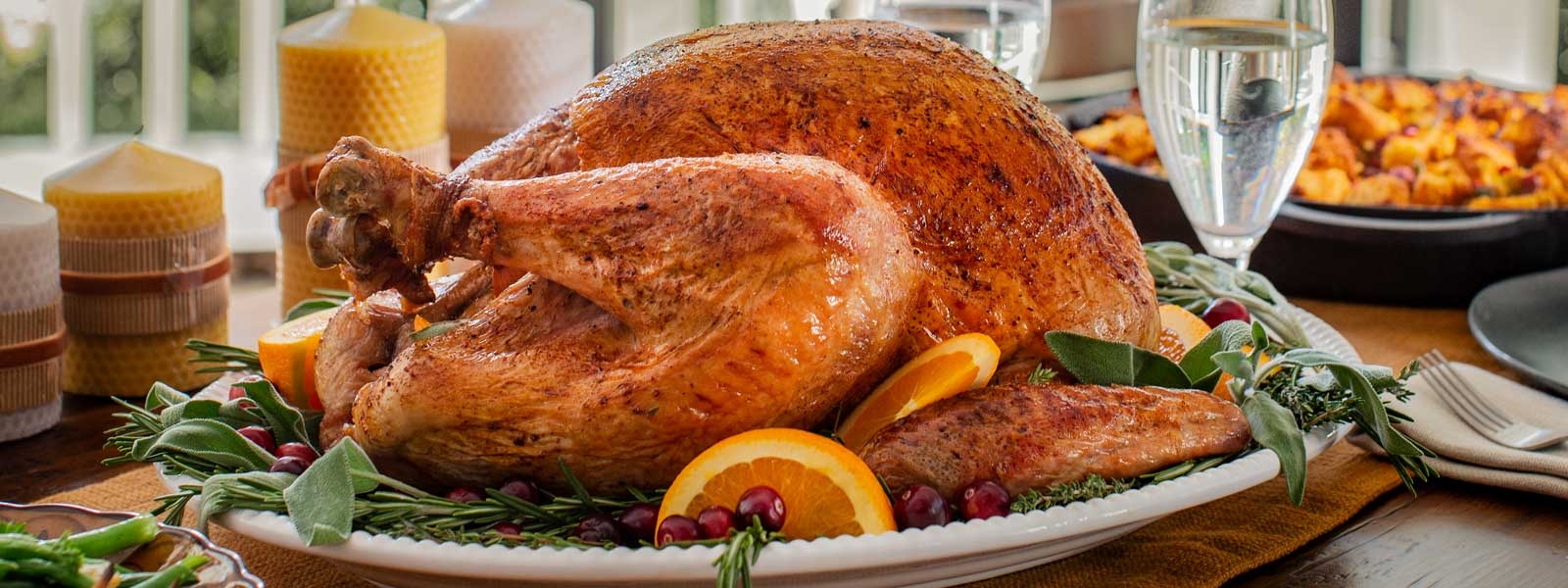
ANATOMY
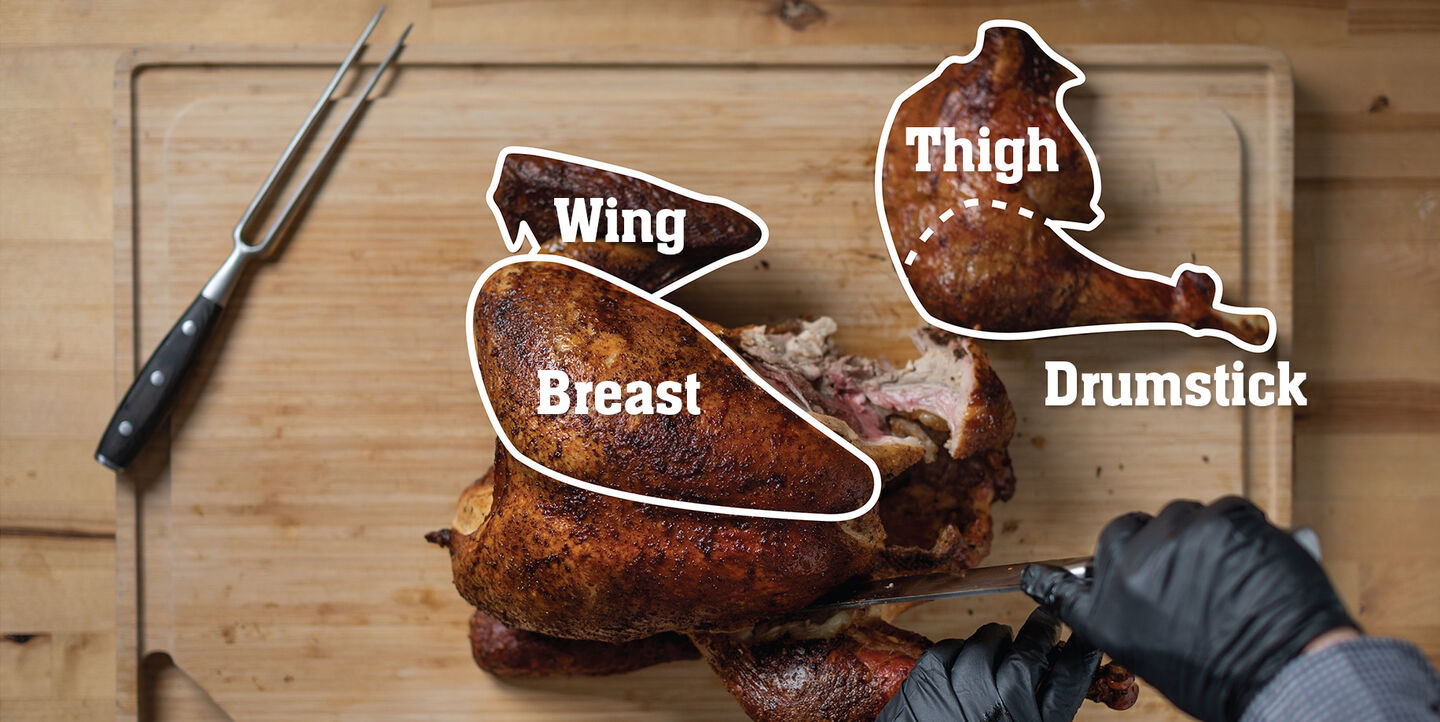
HOW WELL DO YOU KNOW TURKEY ANATOMY
While the majority of the time you'll be cooking a whole turkey. It's important to understand the full anatomy of the turkey. Especially when it comes to cooking, carving, and serving later in the process. A turkey consists of primarily the breast, wings, drumsticks, and thighs. Let's help you dissect what is what.
TURKEY BREAST
The breast is considered white meat. This section ends up cooking the fastest because it has less fat and is, in most cases, directly exposed to the heat. The breast is the most common and largest part of the bird you will be eating.
TURKEY WING
Turkey wings are considered white meat and a pretty flavorful part of the bird. For those who enjoy the skin might prefer the wing as it has a higher skin to meat ratio than the other parts of the turkey.
TURKEY DRUMSTICK / THIGH
Located within the same section, the drumstick and thigh are considered dark meat. Because these two extremities are surrounded by connective tissue you'll notice they cook slower than your turkey's breast.
BUYING A TURKEY
Buying a turkey can be intimidating because they can range in size quite drastically. Knowing how much meat you need for how many people you are feeding can also be stressful. The last thing you want is to spend all your time preparing and cooking a turkey to run out.
WHAT SIZE TURKEY DO I NEED
Don't stress about turkey sizes. Pick a turkey weight based on how many attendees you expect. Add about a 1/2 lbs. extra to these figures for the BEST leftovers. Just don't forget to ask your guests to bring their own Tupperware.
- 5-8 people = 8-12 lbs. turkey
- 8-11 people = 12-16 lbs. turkey
- 11-13 people = 16-20 lbs. turkey
- 13-16 people = 20-24 lbs. turkey
- 16-19 people = 24-28 lbs. turkey
HOW MANY TURKEYS CAN I FIT ON MY PELLET GRILL
How many turkeys you can fit on your pellet grill widely depends on your grill's size and the size of your turkey. If you're cooking for a larger group it may seem practical to get a large, gorgeous, Instagram-worthy turkey. However, we suggest cooking multiple smaller turkeys as they will cook faster and yield more food overall. Keep in mind, it's important to not overload your grill as it can throw the air flow off. We use a medium sized turkey for reference below.
- 20-inch grill = one, 12 lbs. turkey
- 24-inch grill = two, 12 lbs. turkey
- 36-inch grill = three, 12 lbs. turkey
HOW BIG OF A TURKEY CAN I FIT IN MY PELLET GRILL
Turkeys are tall and require a decent amount of space. All of our grills are able to successfully smoke a turkey. If you end up buying a turkey that is too tall, try spatchcocking your bird. Your bird will lay much more flat on your grill grates. A 24-inch pellet grill can house a turkey that is about 9-inches tall, while a 36-inch pellet grill can house an 11-inch tall turkey.
THAWING
While fresh is always best, we understand not everyone will be able to snag a fresh turkey. Frozen works too. If that's the case--don't forget to thaw! When/how do I thaw a turkey? Great question. Large birds are difficult but give yourself some extra time before the big day and you'll have no problem!

REFRIGERATOR METHOD
Keep the turkey in its original wrapping and place it in a fridge set to 40°F or below. You can typically account for 6 hours / pound.
COLD WATER METHOD
In its original wrapping, submerge the turkey in cold water. Replace the water with cold water every half hour or so. A large sink, bucket, or pot works well for this method. If you are unsure you have a large enough pot to hold your turkey try the 24 qt. or 32 qt. aluminum pots. You can typically account for 30 minutes / pound.
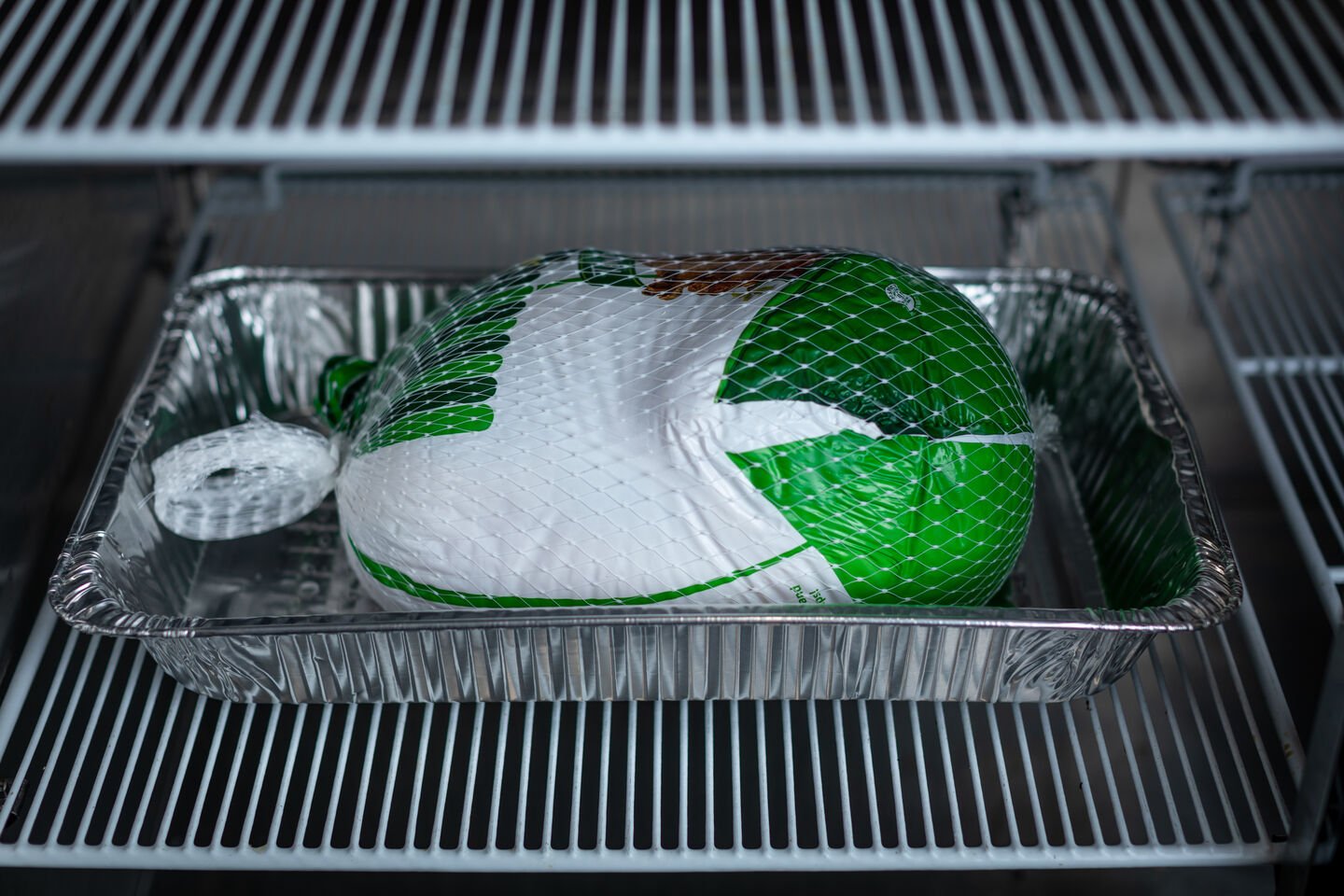
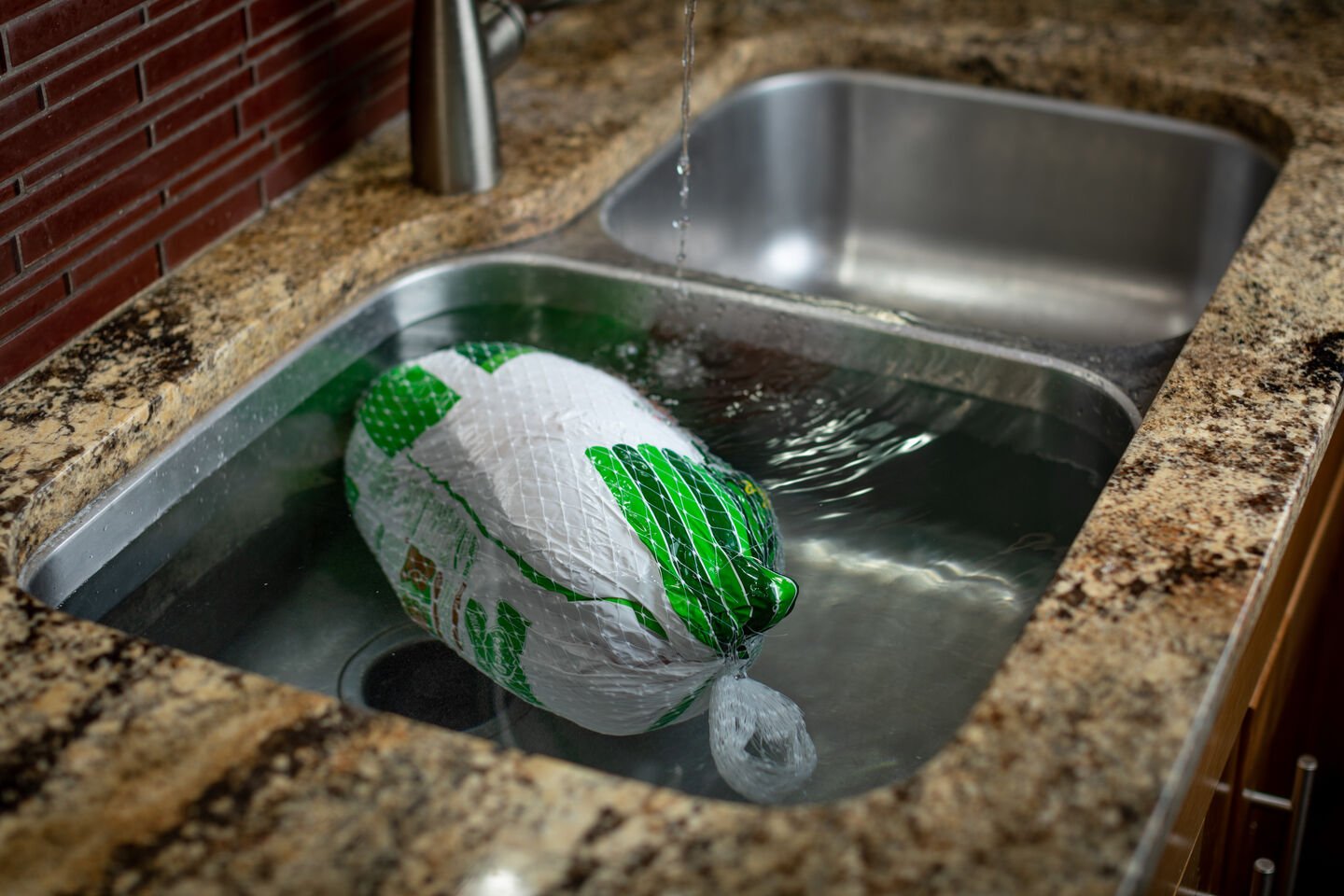
WET BRINE VS. DRY BRINE
Pick your poison—well not really. Either method is good. Brining is basically a fancy word for adding flavor...similar to seasoning a turkey. Here's a little breakdown of our findings on if you should wet brine or dry brine your turkey.
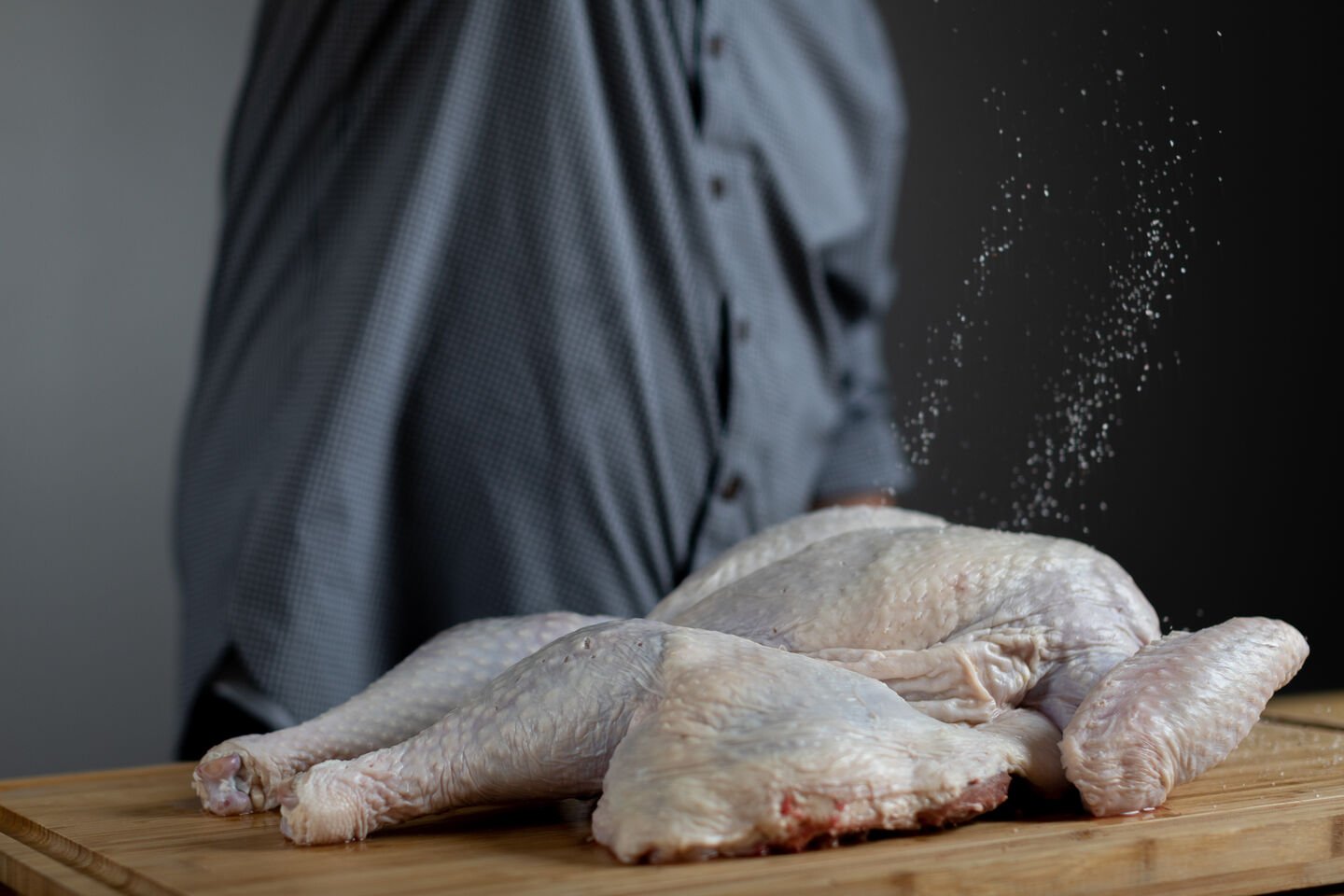
DRY BRINING
Dry brining is kind of like a smoked turkey rub. It consists of rubbing the salt and seasonings directly onto the meat and skin. Then letting it rest for a period of time. This process will typically take between 24-72 hours, 2-3 hours / pound.
Pro: Simple and requires less space than wet brining. The salt helps keep the turkey moist and adds flavor.
Con: Requires more time when done right.
WET BRINING
Wet brining consists of submerging the turkey in salt, spices, and water for an extended period of time. This process will typically take between 12-24 hours.
Pro: Infuses both flavor and moisture.
Con: Requires a large container for the turkey, or a durable brine bag which can take up more space in the refrigerator.
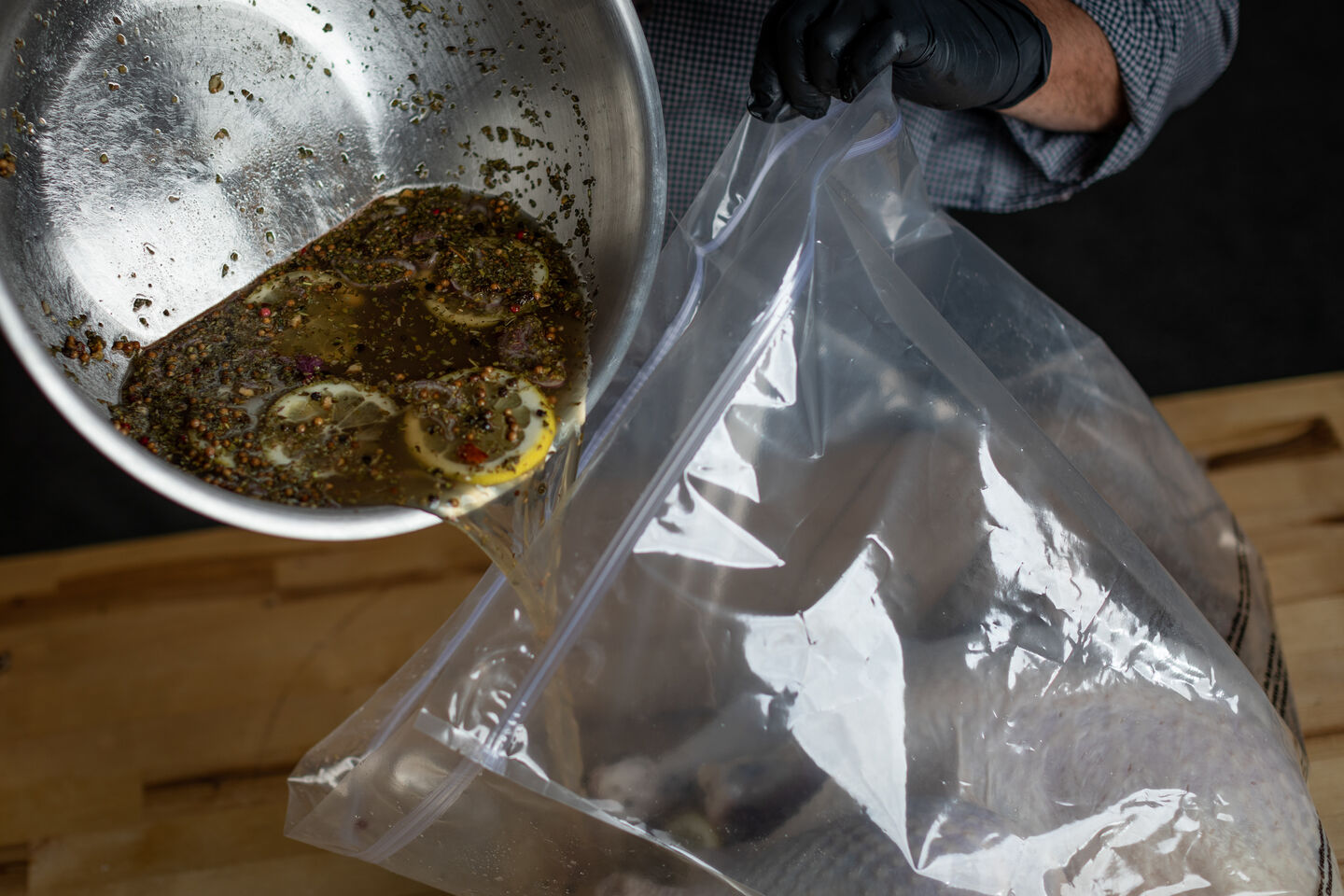
TRUSSING A TURKEY

Trussing a turkey is a fancy word for tying your turkey up. Do you need to do it? Absolutely not. It's purely for aesthetics. So, if you're looking for that Instagram-worthy turkey then you may choose to truss. However, unlike tying a prime rib, trussing is not the practical route when shooting for a juicy bird. In fact, not only is this step fairly difficult for first-timers, but we've found that tying the legs blocks airflow. It ends up drying your turkey out more than anything. If trussing is a must for you, here's a quick rundown on how to truss a turkey.
- Start by placing the twine around the back of the turkey.
- As you bring the twine around to the front, make sure to pass overtop the wings, which will help hold them in place.
- Run the twine along the leg joint and criss-cross it under the ankles.
- Pull snug and crisscross the twine under the front of the bird.
- Cross the ankles and wrap the twine around them, crisscrossing it on the underside of the ankles. Tie off the twine with a simple double overhand knot and trim the excess.
COOKING METHODS
TURKEY CANNON
Ever heard of beer can chicken? Same concept, except it's with a much larger bird. Using a turkey cannon will infuse your turkey with both moisture and flavor. Pour a liquid of your choice (water, wine, beer, cranberry juice, etc.) down the tube to just before the bottom hole. (Optional: Add any flavor enhancers such as garlic, fruits, or vegetables.) Then simply slide the turkey down the cannon breast side up. Oil up the skin and put it in the pellet grill. Grab your Turkey Cannon/Infusion Roaster here.
DEEP FRYING
Deep frying a turkey is another popular cooking method that is worth mentioning. You’ll need an adequately large, yet safe pot and cooker to start. We sell one here on the website. Many of the poultry preparation steps are the same, however, you use cooking oil to cook your turkey all the way though. Many people choose this method to get a juicy inside and a crackly, crispy skin. There are pre-cautions that you need to make note of before settling on deep frying a turkey.
-Do not cook a turkey weighing more than 18 LBS. Failure to follow this instruction will cause oil overflow.
-Do not let the oil exceed 400°F.
-Never drop food or accessories into hot cooking liquid. Lower food and accessories slowly into the cooking liquid in order to prevent splashing or overflow.
-Do not operate the Turkey Fryer under ANY overhead construction. Keep a minimum clearance of 10 FT from the sides, front and back of appliance to ANY construction.
Want a step-by-step instruction on how to deep fry a turkey? Grab the recipe here.
SPATCHCOCKING
There are a lot of reasons for spatchcocking your turkey vs. smoking the traditional way. The most commonly used reason is that a spatchcocked turkey will yield a crispier skin. While there is no spatchcock turkey cooking time chart, the turkey will cook in almost half the time. It also lays flatter so it may fit better in your pellet grill or oven (if vertical space is an issue.)
HOW TO SPATCHCOCK A TURKEY

- Using a good pair of kitchen shears, cut down both sides of the backbone and remove (*but, don't throw away!) It's easier to cut through the joints if you stay close to the backbone.
- Turn the turkey over and firmly press down on the turkey breast. The breastbone should snap, allowing the turkey to lay flat.
*Check out the picture above. Remember that backbone we told you to remove but not toss? Since you can't stuff a spatchcocked bird, place a tray of stuffing under your turkey about halfway through your cooking process--with the backbone inside!) It'll catch all those messy drippings and give you TONS of added flavor.
WOOD
Different woods burn differently and not just any variety hardwood will do for a turkey. If you're looking for a classic bold flavor we recommend a Mesquite or Oak pellet base. If you're looking for something on the sweeter side try a Cherry or Apple. And if you're unsure about which hardwood pellets to commit to, the Competition Blend is a safe route.
In our Pro series pellet grills and smokers you can use hardwood chips or chunks. The Woodwind Pro and XXL Pro have our new technology which give significantly more smoke flavor rivaling that of an offset stick smoker. The chips and chunks burn slightly "dirtier". This is where the majority of the flavor comes from. Pellet grills are amazing at flavor and convenience but critics will say they don't provide enough smoke flavor. If you are considering what wood to use and have the capability of picking up a Pro series pellet grill or vertical smoker, the wood you put in the smoke box will determine the ending flavor.
TIME + TEMP
There are many variables that can determine the amount of time it will take to cook a turkey; such as what method you're using (traditional, turkey cannon, or spatchcocked,) the temperature of your pellet grill/oven, outside weather, and even things like the temperature of your turkey before you start to cook it. So, how long should you cook a turkey? Below are some rough estimates and a quick comparison. The chart reflects cook times for a pellet grill set at 325°F.
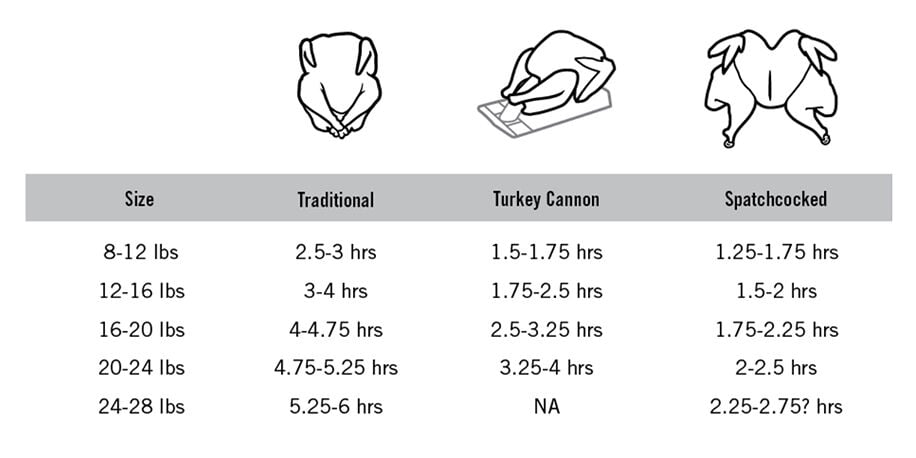
The internal temperature to safely consume turkey is 165°F. The most accurate way to monitor your turkey's cooking progression is by using a meat probe or thermometer.
RESTING
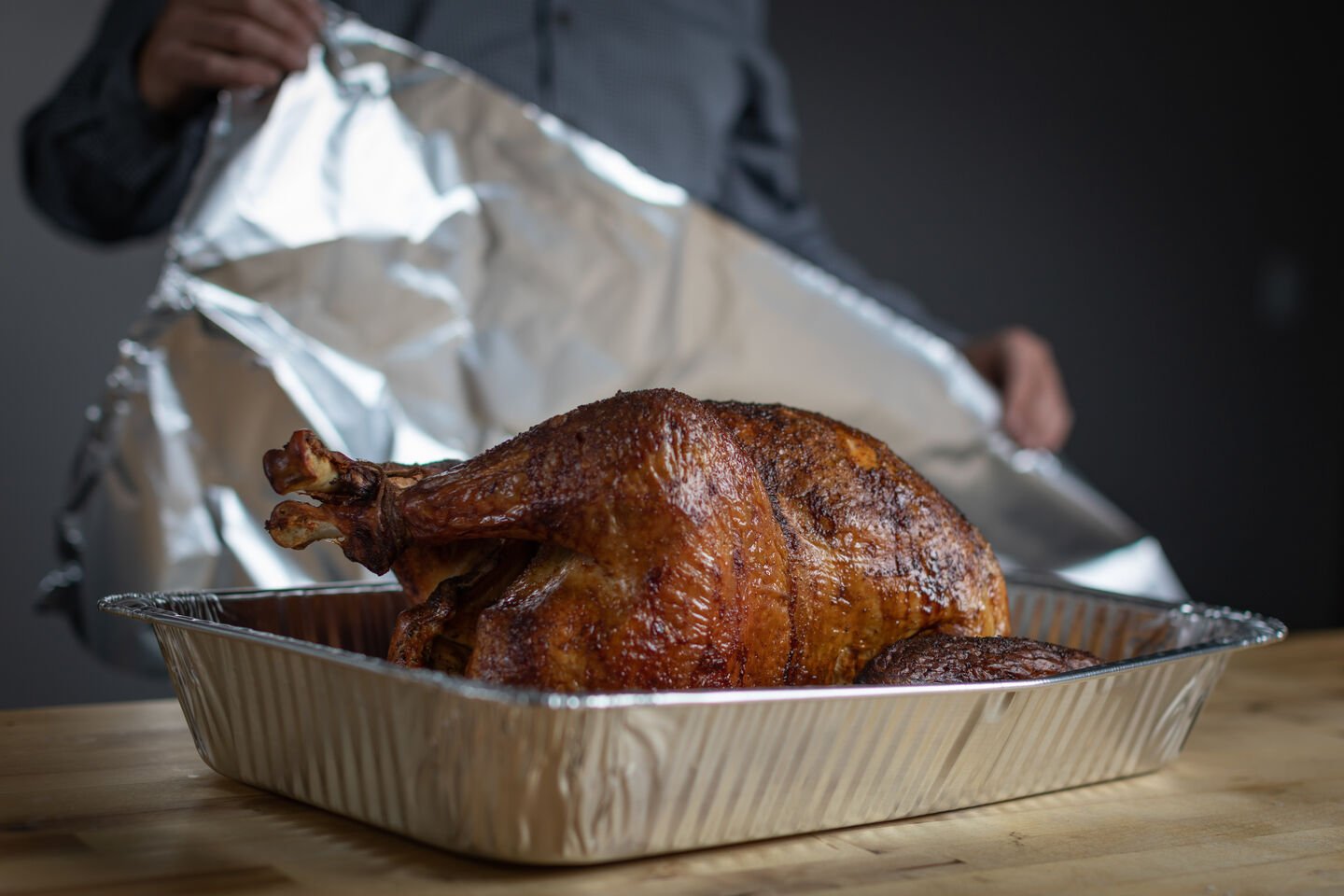
After cooking, let the turkey rest for at least 20 minutes before carving and serving it up. This will give your turkey some much needed time to redistribute all those tasty flavors. If you have guests late to the party and have a large cooler, you can rest your turkey for up to three hours.
SLICING
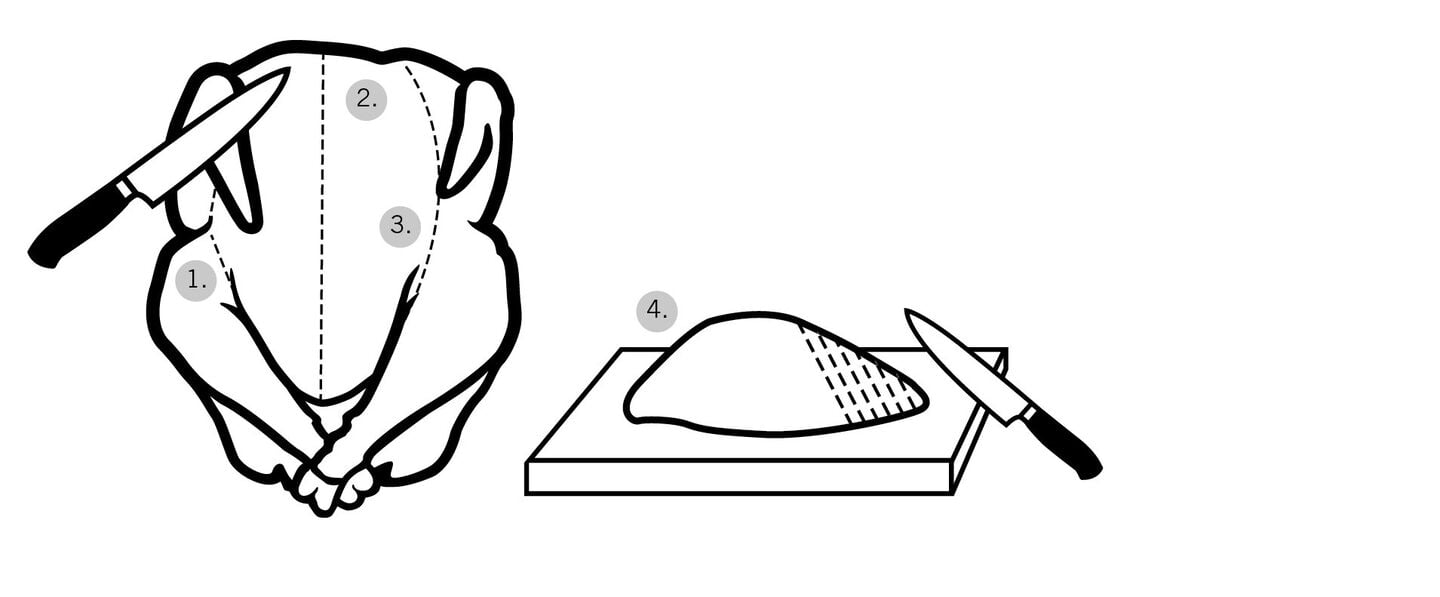
- Remove the leg and wings by cutting at the joint where it meets the body.
- Cut along the backbone.
- Cut in from the side and meet the cut made along the backbone (from step 2.)
- Lift out the entire breast and slice against the grain.
Carve like a pro using a Carving Set to make your slices. Plus, pick up a large, 26-inch Bamboo Cutting Board to create a carving station big enough for your turkey.

SERVING
Serving a turkey is easier than you may think. If done right a turkey will be one of the most delicious, flavorful proteins you will ever make. Turkey gets a bad wrap because more often than not they are over cooked and dried out. Now you know everything about preparing and cooking the turkey here are some side dish suggestions that pair very well.
SIDE DISHES
Gravy is an obvious sauce to serve with a turkey, but you can pair with other essentials like Cranberry sauce, Green Bean Casserole, Thanksgiving Rice, or a variety of potato dishes.
STORING + LEFTOVERS + REHEATING
Store cooked turkey in a refrigerator for up to 4-5 days. It's easy to dry out poultry when reheating. We suggest reheating in the oven or stove top when possible. Heat to 350°F. For medium heat and add a couple tablespoons of water or stock to the bottom of the dish to create some moisture. Reheat until your turkey reaches an internal temperature of 165°F. Turkey also freezes well. You can freeze cooked turkey for up to three months. As far as leftovers go-the possibilities are endless! Turkey noodle soup, pot pies, Thanksgiving Rice, turkey panini, or chop and toss on a salad.



Comments
Be the first to comment...